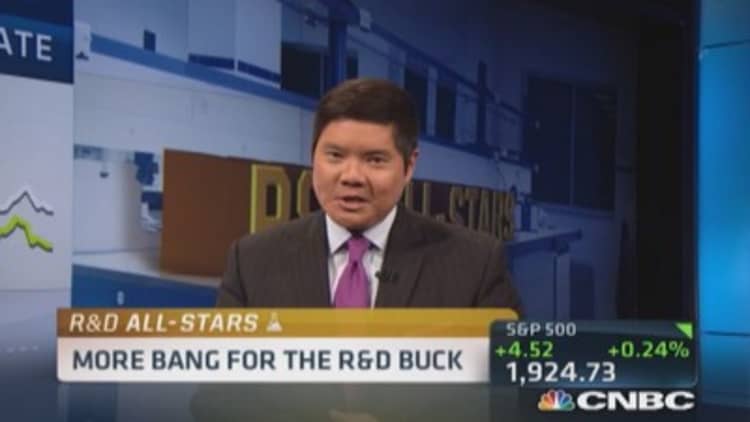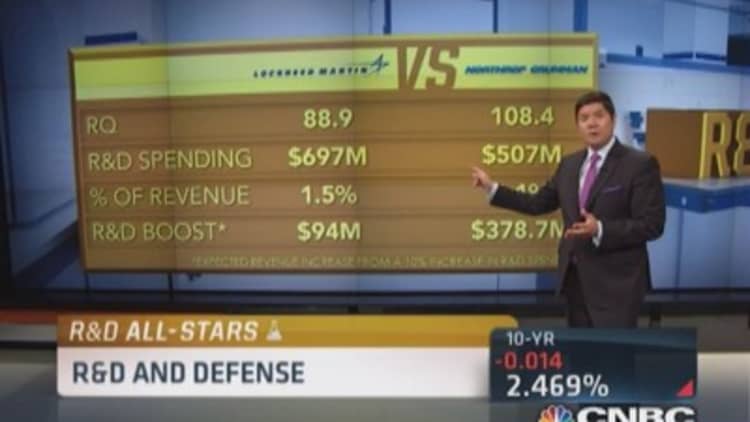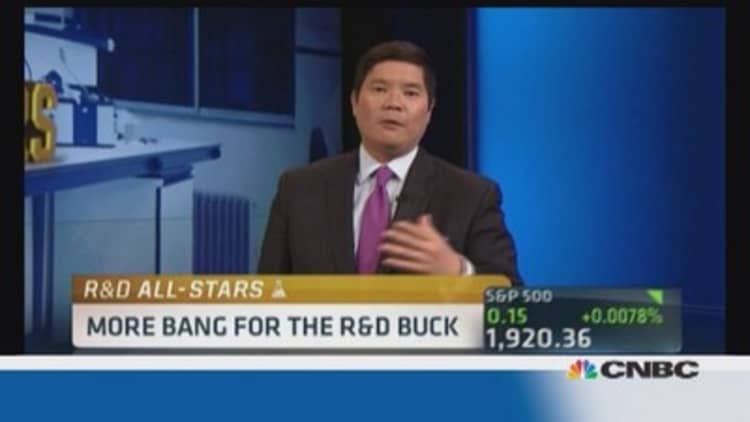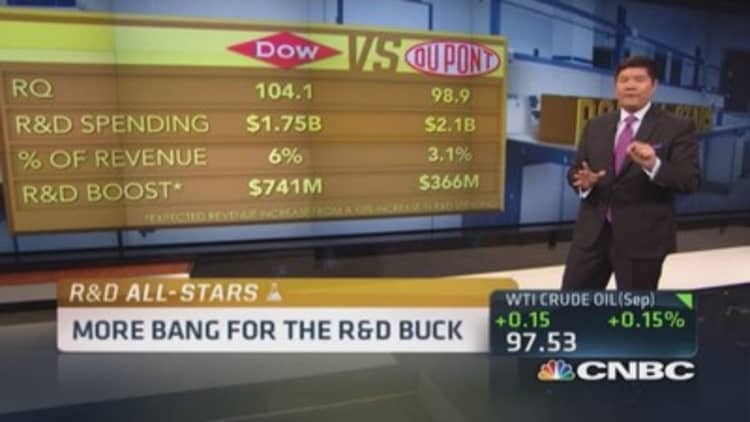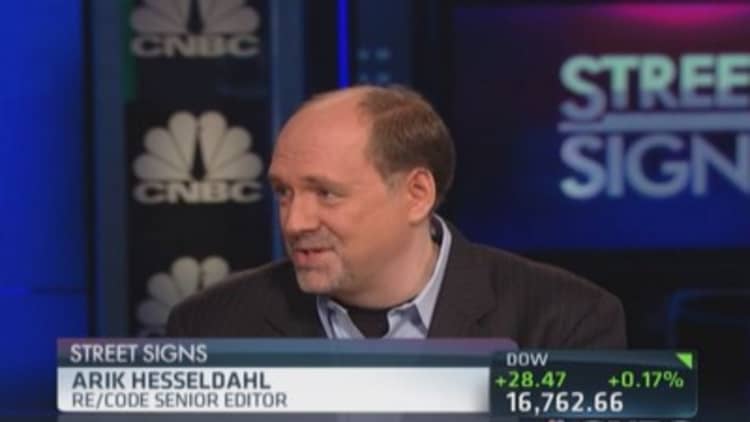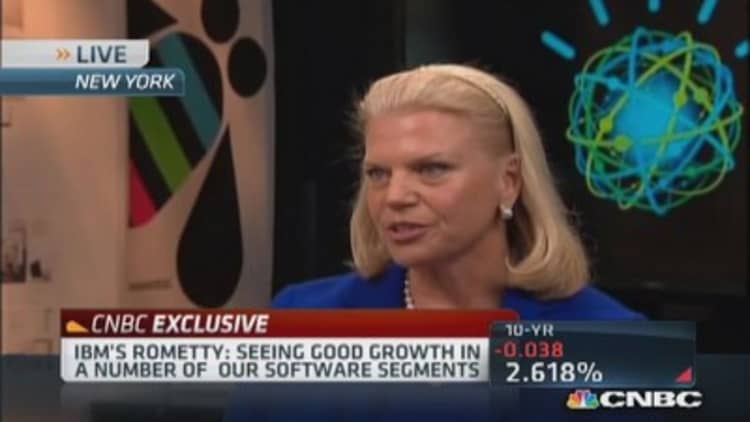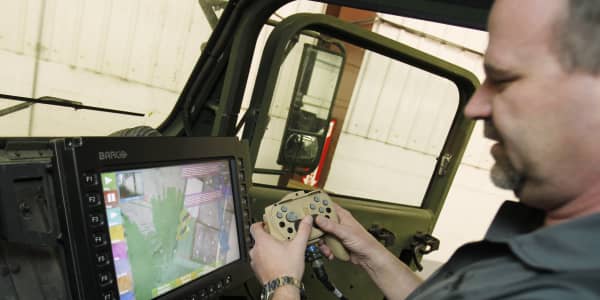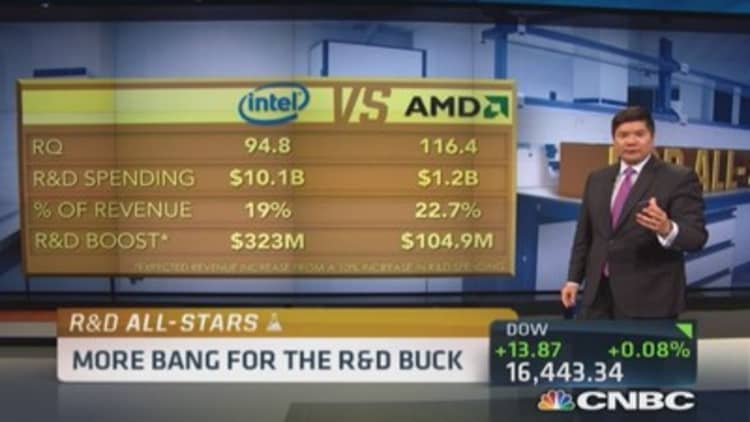
When lists are generated of the hottest companies and trends in technology, the dominant words have become predictable: mobile, viral, cloud, big data and wearable. These are the niches that will define the future. Noticeably absent: silicon, semiconductor and microprocessor—or, in other words, the foundation for the revolution in modern computing.
These are, after all, the companies that continue to bend the laws of physics to cram more and more intelligence into ever smaller chips that enable the world's devices. Innovation remains a major part of the story—and long-term survival strategy—for semiconductor-related companies.
"There's still some cool and interesting stuff going on at places people aren't paying attention to," said Anne Marie Knott, professor of strategy at Washington University's Olin School of Business in St. Louis.
The Research Quotient (RQ), a measure of R&D resourcefulness created by Knott, shows that innovation doesn't always equate to buzz: Companies from old-guard industries and from the technology sector's old guard, specifically, show that being boring is still in when it comes to ranking the market's R&D elite. Knott teamed with CNBC this year to create the first-ever CNBC RQ 50 list, and it contains nine companies in and around the semiconductor market, including three of the CNBC RQ 50 top 10 companies.
These unheralded companies are also behind the buzzy companies that do get all the attention. At Silicon Laboratories in Austin, Texas, for example, engineers are designing chips for Google's Nest Web-connected thermostat, bringing together programmable software and speedy Wi-Fi connectivity without requiring a ton of power.
Read MoreLearn more about the CNBC RQ 50 methodology
With a stock market value of $1.8 billion and a history that dates back to the 1990s, Silicon Labs is ranked fifth—just behind Amazon.com—on the CNBC RQ 50, which includes publicly held U.S. companies investing $100 million or more in R&D. The list measures R&D productivity by forecasting the percentage increase in revenue that would be associated with a 1 percent increase in R&D.
Other chip-market players to make the CNBC RQ 50 are Advanced Micro Devices, SanDisk, PMC-Sierra, Lam Research, Spansion, Xilinx, Altera and Microsemi. More broadly within tech, Google finished in the 41st position, just ahead of Salesforce.com and four spots above Netflix.
Creating a competitive moat with R&D
For Silicon Labs, an almost 20-year history has given the company plenty of time to figure out how to perform R&D to maximize every dollar spent. Going up against heavyweights like Texas Instruments, it has no choice.
As a fabless semiconductor maker, Silicon Labs designs chips internally but has them built elsewhere, by manufacturers including Taiwan Semiconductor Manufacturing. Alessandro Piovaccari, vice president of engineering at Silicon Labs, said R&D is improving at the same rate as its products, because the company doesn't distinguish between the two.
"Our R&D and product development are the same thing," Piovaccari said. "It's necessary if you're doing cutting-edge products."
Read MoreCNBC elects an R&D Hall of Fame
One major benefit that any established semiconductor maker or chip-equipment manufacturer has is the extremely high cost of doing business, particularly in the early days, compared with software and Internet businesses that are getting cheaper and easier to get off the ground. Venture capitalists invested $311.8 million in semiconductor companies in the first half of 2014, compared with $10 billion in software start-ups and $5 billion in Internet companies, according to the National Venture Capital Association.
What smart investors understand
Unlike photo-sharing app makers and Web-based business software developers, who constantly have to put resources into tracking and beating back the new competition, companies in the chip market can focus their investments on products and listen to the demands of their customers.
"Over the long term, that's what creates competitive moats," said John Pitzer, an equity analyst covering semiconductor companies for Credit Suisse in New York. "In all of tech, they tend to have the highest barriers to entry."
Silicon Laboratories hasn't seen a direct correlation in its recent stock performance—it's up only 8 percent in the past year—but smart investors are finding plenty of opportunity in these chip companies. The Philadelphia Semiconductor Index (SOX), consisting of 30 chip-related stocks, has jumped 27 percent in the past year, through Aug. 6, topping the 12.5 percent gain in the Standard & Poor's 500 and 23 percent Nasdaq 100 return. This year, the semi index is up 12.5 percent versus an S&P 500 return of 3 percent and Nasdaq 100 gain of 7 percent. The SOX members are benefiting from a spate of acquisitions in the market, which is leaving fewer players to compete for the pool of available dollars. The most recent was Applied Materials' agreement last year to buy Tokyo Electron for more than $9 billion, a deal that's yet to close.
Read MoreMeet the 2014 CNBC RQ 50
Lam, a major equipment supplier to chipmakers and No. 16 on the CNBC RQ 50 list, has been a recent winner, with its stock up 40 percent in the past 12 months, through Aug. 6. The Fremont, California-based company sells to the likes of Samsung and TSMC and is profiting from surging demand for chips in all sorts of mobile devices. In June industry group Semi forecast that semiconductor fab-equipment spending would jump 24 percent this year, to $35.7 billion, and another 11 percent in 2015 to near-record levels.
Ruben Roy, a semiconductor analyst at Piper Jaffray in New York, calls Lam his favorite stock in the semiconductor equipment market.
"They're a share taker," said Roy, who has an $80 price target on the stock, approximately 15 percent above its current share price. "From a pure R&D perspective, they've probably done the best job over the past five years."
Lam CFO Doug Bettinger said the company's R&D expertise comes from close interactions with its customers and research institutions, which are critical to meet the engineering challenges of building more sophisticated features onto smaller chips. Lam signed an agreement in June with Imec, a nanoelectronics research center in Belgium, expanding an R&D partnership that includes sharing of tools and resources for the development of integrated circuit technology.
"We spend a lot of time talking with our counterparts at a customer level, trying to understand what they're going to need in three years and how can we work together with them to anticipate what's going to be needed," Bettinger said. "There are only so many dollars you can spend to do all the development you need to do and still meet the financial model for your investors," he said.
—By CNBC's Ari Levy. Follow him on Twitter: @levynews
